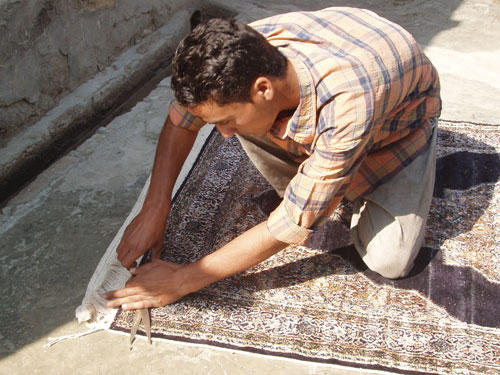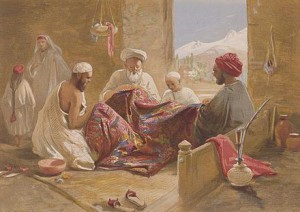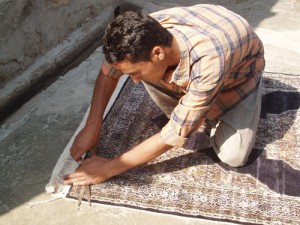
Kanikar Shawl
Wrapped around in the snowy valleys of Kashmir is the story of a truly exquisite fabric. Kanikar is not just a piece of fabric that is wrapped loosely around the shoulders or to cover the head. Kanikar Shawls from Kashmir are an ensemble of prestige for the state of Kashmir. Also known as Tilliwalla or Tilikar, these shawls are one of the two varieties produced in Kashmir. While loom woven garments are absolutely amazing, the kani loom fabrics are the pulse of the Kashmir fabric industry.
Origin and History
The foremost written accounts of the Kani shawls can be traced back to the Mughal era. It is believed and widely read that the Mughal Emperor Akbar was very fond of this fabric. He admired them to the extent that he owned quite a number of them and also wrote about them in ‘Ain-i-Akbari’.
Kanihama, a village that sits prettily in the western parts of Kashmir, is where it all began. The stories about the Kanikar shawls spring from this very part of the beautiful valley of Kashmir. Located 20 miles away from Srinagar, Kanihama produced exquisite Kani shawls since the Mughal era. In 1981, there was only one shawl weaving atelier remained. With the hard work and love that the people of Kanihama showed in their traditional art at that time, the industry was soon revived. The atelier was run by Mr. Kanihama with no more than six apprentice weavers and a handful of other people. At the time, the best of the variety had a certain number of foundation threads per inch of the cloth. That certain number is said to be around 60 to 70. Every single device used to manufacture a Kanikar belonged to the early 19th century, just that the dyes were mostly made from modern European chemicals.
Sources of Inspiration
Literature has it that the inspiration behind the designs that breathe life into this fabric are drawn from imitations of natural ambiance like flora and fauna. Embroidery in bright and contrasting colors makes the fabric look feminine. The good thing, however, is that a man can own a Kanikar as well; probably one which has been made using more earthy colours and subtly designed.
Faces behind the fabric
The main ingredient that goes into the creation of a Kanikar shawl is patience. Artisans put tremendous skill and effort into creating the fabric. Why patience is the key to a perfect kanikar, you may ask. The reason is that it takes long before a single shawl is created. An artisan can weave no more than an inch of Kani per day, which too required complete concentration and devotion. The technique that is used in making a Kanikar shawl is that of throwing the weft across, and thereafter, deciding the design.
It takes two to three artisans to complete one shawl in a year. That said, it means it would require a whole community to serve the kind of demand that Kanikar shawls have created today. Every piece of Kanikar is 1*2 meters in size, and oblong in shape. Since so much of time and effort goes into the creation of a single kanikar shawl, the Government of India decided to get a geographical identity for the fabric so that no other country can produce these shawls.
Varieties
Doranga-Dorukhi, Dorukhi, simple single sided, and many more varieties are available in the Kanikar shawls. One of the most admired, however, is the ‘Aksi. The variety focuses on the theme of reflection. In this, the design is created on one side and the other side is either left plain or adorned with some other pattern.
Present Day Scenario
The Kanikar shawls were counted amongst the most exquisite of attires in Western Europe during early and mid 80s. Today, Kanikar shawl industry is one of the largest and most developed in the state of Kashmir. Statistics establish that the shawl industry in Kashmir earns revenue of Rs. 550 crore per year every year, out of which Rs. 150 crores are a contribution of Kani shawls. The price of one Kani shawl varies from Rs. 30,000 to Rs, 2,00,000. Internationally as well, a single Kani shawl is worth $4000 to $8000.
Interesting Facts and Comparisons
- Frank Ames, author of The Kashmir Shawl, has written in her book that in the year 1853, one Kani shawl that was being made for the Empress of France took 30 men to complete the task in 90 days.
- The geographical identity was obtained for Kani shawls in the year 2006
References
Categories: Textiles


